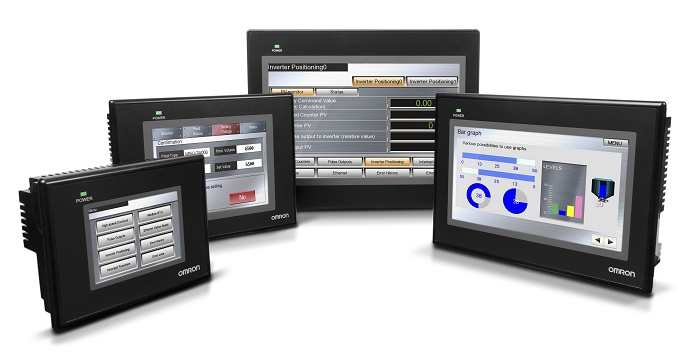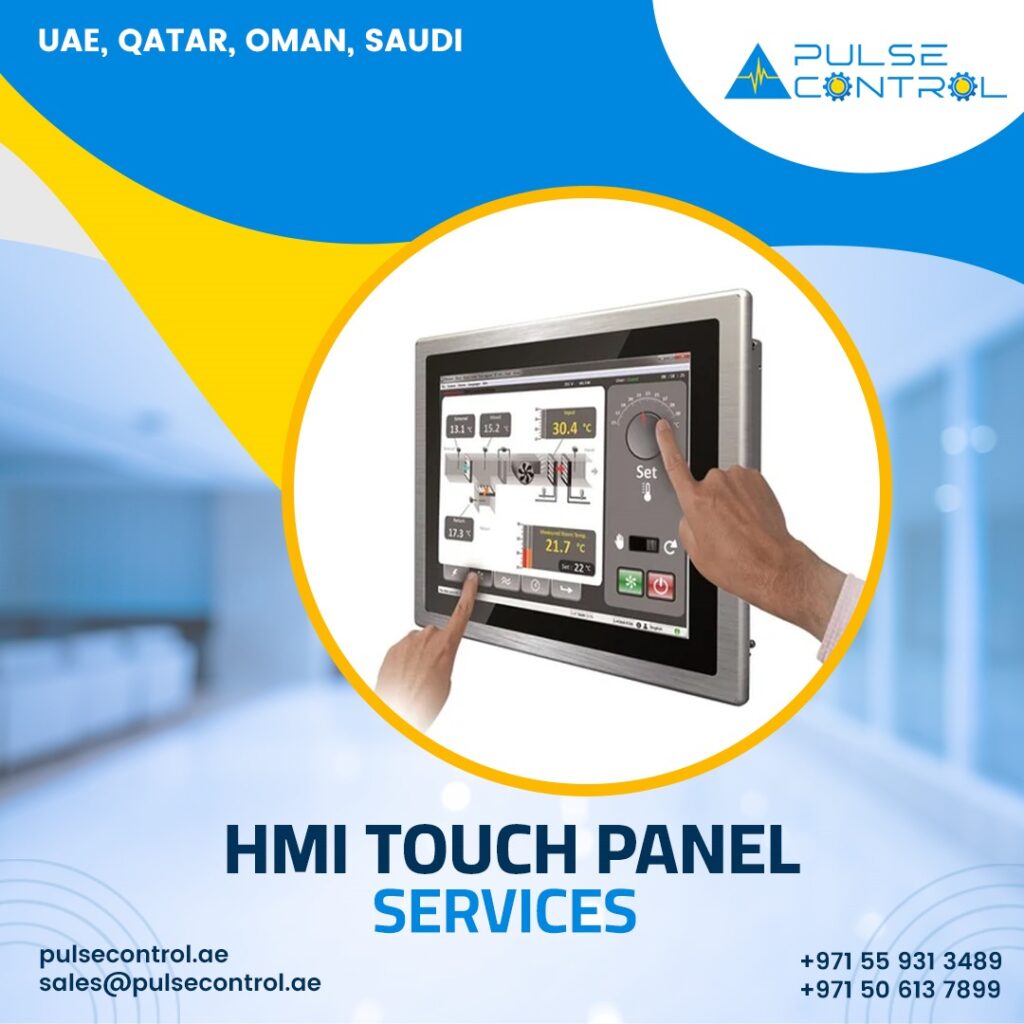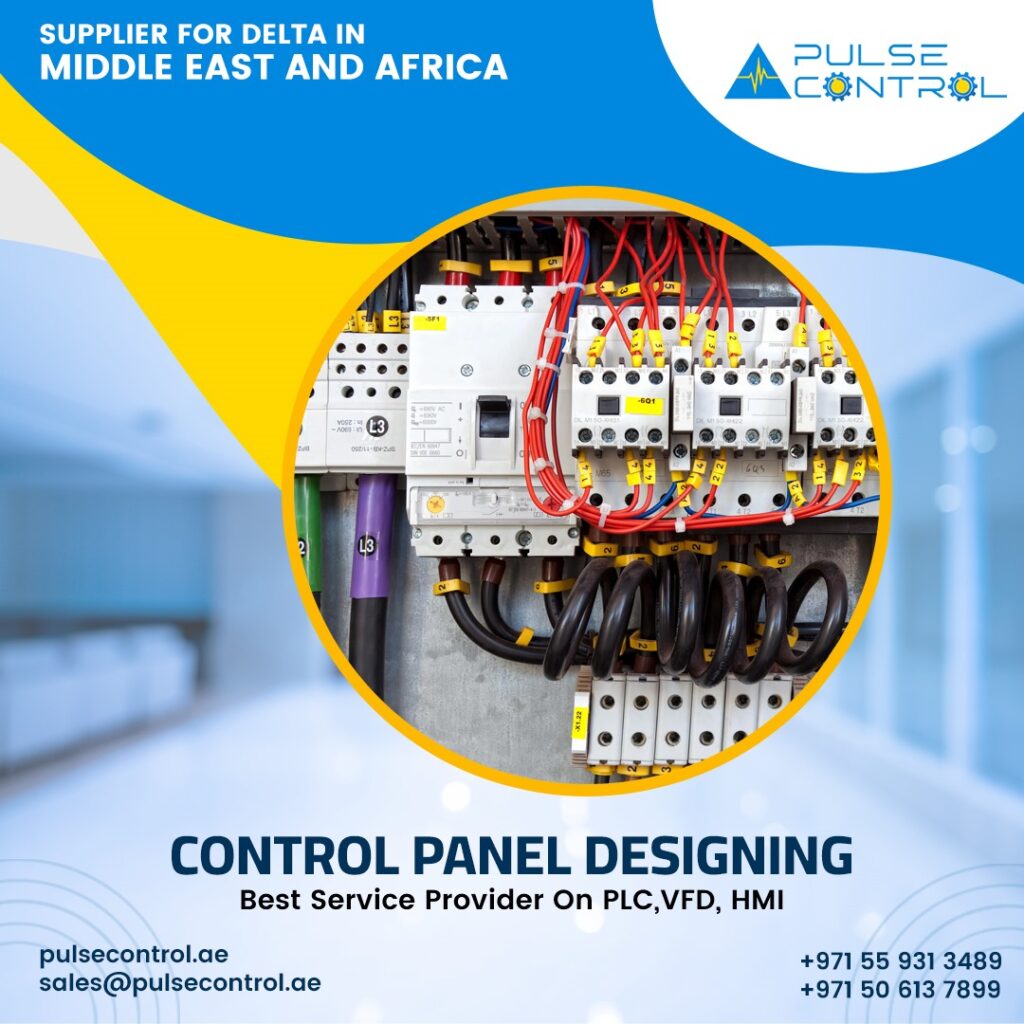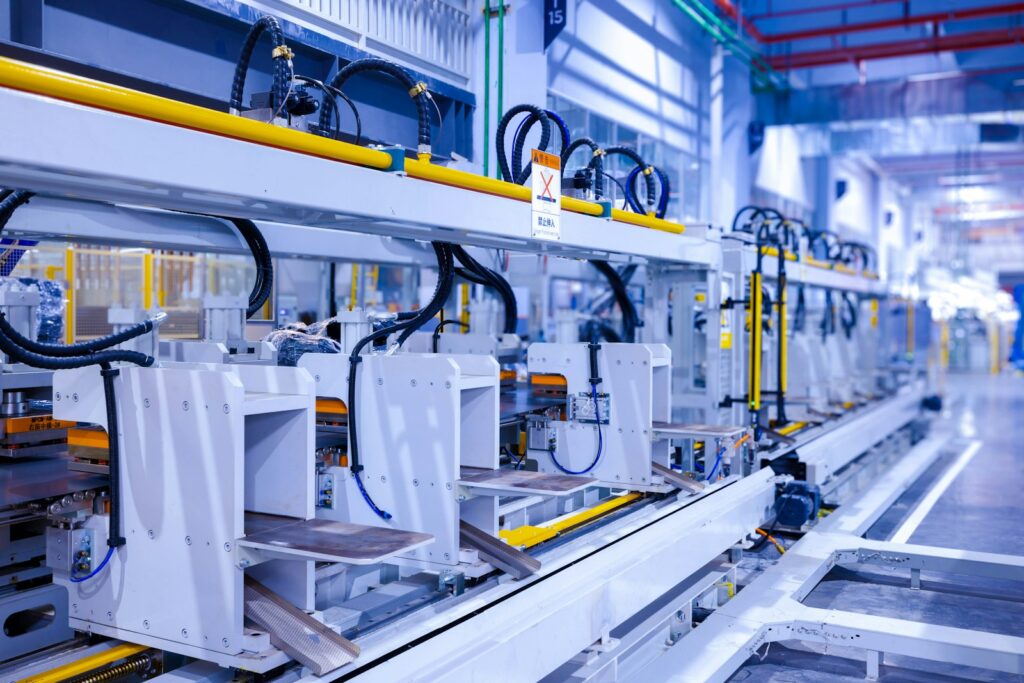
The Best HMI service provider in UAE
In the realm of industrial automation, Pulse Control has established itself as a leading provider of Human-Machine Interface (HMI) solutions in the UAE. With a deep understanding of industrial needs and a commitment to innovation, Pulse Control ensures that businesses in various sectors—manufacturing, energy, logistics, and more—are equipped with cutting-edge tools to streamline operations. Their expertise in HMI systems allows them to bridge the gap between human operators and advanced machinery, creating an efficient and intuitive interface that enhances productivity and decision-making.
Pulse Control offers a wide range of HMI products tailored to the diverse needs of its clients. From compact displays for small-scale applications to advanced touch-screen interfaces for complex industrial setups, the company ensures that its solutions are user-friendly, durable, and highly functional. These HMIs are designed to provide real-time data visualization, seamless communication between devices, and easy integration with existing systems. By partnering with leading brands and utilizing the latest technology, Pulse Control ensures top-notch performance and reliability, empowering businesses to maintain a competitive edge in a rapidly evolving industrial landscape.
What sets Pulse Control apart is its commitment to customer-centric service. Beyond providing high-quality HMI systems, the company offers comprehensive support, including installation, training, and after-sales services. Their team of experts works closely with clients to understand their specific requirements, customizing solutions to meet unique operational challenges. Pulse Control’s proactive approach to maintenance and troubleshooting ensures minimal downtime and maximum efficiency for its clients. This dedication to excellence has made it the preferred choice for HMI services in the UAE, solidifying its reputation as a trusted partner in industrial automation.

Key Specialties of Pulse Control as an HMI Service Provider
Comprehensive Range of HMI Solutions
Pulse Control offers an extensive portfolio of Human-Machine Interface (HMI) solutions, catering to industries of all sizes and complexities. Their offerings include everything from basic text-based displays for straightforward applications to advanced touchscreen panels for intricate industrial processes. These HMIs are designed to enhance operational efficiency by providing intuitive controls and real-time monitoring capabilities. Pulse Control ensures that each solution is robust and reliable, making it suitable for challenging industrial environments where durability and performance are critical.Tailored and Customizable Services
Recognizing that no two businesses operate the same way, Pulse Control specializes in delivering HMI systems tailored to specific operational needs. They work closely with clients to understand their unique challenges and requirements, offering customized features such as specific display layouts, data visualization preferences, and control functionalities. This tailored approach ensures that the HMI system not only integrates seamlessly into the existing setup but also optimizes productivity by addressing the precise needs of the operation.Partnerships with Global Brands
Pulse Control collaborates with some of the leading manufacturers in the automation industry, including Delta, Siemens, and ABB. These partnerships enable them to provide state-of-the-art HMI products that incorporate the latest technological advancements. By sourcing from trusted brands, Pulse Control guarantees the quality, reliability, and innovation of the solutions they offer. This ensures clients benefit from cutting-edge technology that enhances their operational capabilities while maintaining international standards of quality.Expert Integration and Seamless Compatibility
Integrating HMIs into existing industrial setups can be challenging, but Pulse Control excels in this area. Their team of experts ensures that HMI systems work flawlessly with programmable logic controllers (PLCs), Variable Frequency Drives (VFDs), sensors, and other automation components. This seamless integration not only enhances the efficiency of the industrial process but also minimizes potential downtime during the implementation phase, allowing for a smoother transition to upgraded systems.Focus on User-Friendly Interfaces
A standout feature of Pulse Control’s HMI systems is their emphasis on usability. Their interfaces are designed to be intuitive, minimizing the learning curve for operators. Features such as clear layouts, touch-based navigation, and simplified workflows ensure that operators can quickly adapt to the system, reducing the chances of errors and improving overall productivity. This focus on user-friendly designs highlights Pulse Control’s commitment to creating systems that are as practical as they are advanced.End-to-End Support: Installation, Training, and Maintenance
Pulse Control provides comprehensive support throughout the lifecycle of their HMI systems. From initial installation to operator training, their team ensures that clients are well-equipped to leverage the full potential of their HMI solutions. Additionally, their post-installation support includes regular maintenance, updates, and prompt troubleshooting services. This holistic approach not only guarantees optimal system performance but also fosters long-term partnerships built on trust and reliability.Advanced Real-Time Monitoring and Control Features
The HMIs offered by Pulse Control are equipped with advanced real-time monitoring and control capabilities. This allows operators to oversee complex processes, track data trends, and respond to issues in real time. These features enable businesses to maintain high levels of operational efficiency while minimizing risks and downtime. Real-time monitoring also facilitates informed decision-making, as operators have access to accurate and up-to-date information at all times.Industry-Specific Expertise and Versatility
Pulse Control serves a broad spectrum of industries, including manufacturing, energy, logistics, water treatment, and more. Their deep understanding of the unique challenges faced by each sector enables them to deliver highly specialized HMI solutions that align with specific industry standards and requirements. This versatility underscores their ability to adapt to a wide range of operational demands, making them a preferred choice across different sectors.Commitment to Innovation and Future-Readiness
Pulse Control stays ahead of the curve by embracing technological advancements and incorporating them into their offerings. From IoT-enabled HMIs to advanced visualization features, they ensure that their solutions are not only current but also future-proof. This commitment to innovation helps businesses transition smoothly into the era of Industry 4.0, where digital transformation and automation are key to maintaining a competitive edge.Exceptional Customer Support and Service
At the core of Pulse Control’s operations is a commitment to customer satisfaction. Their dedicated support team ensures that clients receive prompt assistance, whether it’s for troubleshooting technical issues or upgrading their systems. This focus on excellent after-sales service has earned Pulse Control a reputation as a trusted partner in industrial automation, strengthening their position as a leading HMI service provider in the UAE.
By combining innovation, expertise, and customer-centric service, Pulse Control has established itself as a leader in delivering HMI solutions that empower industries to achieve operational excellence.

New Trends and Technologies in Human-Machine Interfaces (HMI)
The field of Human-Machine Interfaces (HMI) is evolving rapidly, driven by advancements in technology and the growing demands of Industry 4.0. Modern HMIs are no longer just simple display panels for controlling machines; they are sophisticated systems that enable seamless communication between humans and industrial processes. One of the most notable trends is the integration of IoT (Internet of Things) into HMI systems. IoT-enabled HMIs provide real-time connectivity, allowing operators to monitor and control processes remotely using cloud-based platforms. This trend enhances operational efficiency, improves decision-making, and supports predictive maintenance by leveraging data analytics, thus minimizing downtime and maximizing productivity.
Another significant trend is the adoption of multi-touch and gesture-based interfaces. Borrowing from the user experience of smartphones and tablets, these interfaces provide an intuitive and engaging way to interact with machines. With pinch, zoom, and swipe functionalities, operators can navigate complex systems with ease, reducing training time and minimizing errors. Furthermore, high-resolution capacitive touchscreens with robust durability are becoming standard, ensuring that HMIs can withstand harsh industrial environments while offering advanced usability. This user-friendly approach aligns with the broader push towards enhancing operator efficiency and satisfaction.
The integration of augmented reality (AR) and virtual reality (VR) into HMI systems is another transformative trend. AR overlays real-time data and instructions onto physical environments, assisting operators with troubleshooting, assembly, and maintenance tasks. VR, on the other hand, is used for immersive training and simulation, enabling operators to practice handling complex scenarios in a risk-free virtual environment. These technologies not only enhance safety but also improve skill acquisition and reduce operational risks.
Advancements in artificial intelligence (AI) and machine learning (ML) are also shaping the future of HMIs. AI-powered HMIs can predict user needs, adapt interfaces based on usage patterns, and provide intelligent assistance. For instance, if a recurring issue arises in a production line, an AI-driven HMI could suggest solutions based on historical data, improving response times and decision-making. Additionally, voice recognition and natural language processing are becoming more prevalent, allowing operators to interact with machines through voice commands, further simplifying operations.
Edge computing is another emerging technology in the HMI landscape. By processing data locally rather than relying solely on cloud-based systems, edge computing reduces latency and enhances real-time decision-making. This is particularly valuable in scenarios where immediate responses are critical, such as in safety systems or high-speed production lines. Edge-enabled HMIs also reduce bandwidth usage and improve data security by keeping sensitive information within the local network.
The demand for modular and scalable HMI solutions is growing as industries prioritize flexibility and cost-effectiveness. Modular HMIs allow businesses to expand or reconfigure systems as needed, aligning with changing operational requirements. This adaptability is crucial in industries experiencing rapid growth or shifts in production demand. Additionally, the use of open-source platforms in HMI development is fostering innovation, enabling seamless integration with a wide range of third-party systems and devices.
Finally, the emphasis on sustainability and energy efficiency is influencing HMI design. New-generation HMIs are built with energy-saving components and optimized power consumption, contributing to overall sustainability goals. Additionally, advanced materials and manufacturing processes are being used to create eco-friendly hardware without compromising on performance.
In conclusion, the latest trends and technologies in HMI are redefining the way humans interact with machines. From IoT connectivity and touch-based interfaces to AI-driven insights and AR/VR integration, these advancements are making industrial operations more efficient, intelligent, and user-friendly. As industries continue to embrace digital transformation, HMIs will remain at the forefront, enabling seamless communication and control in increasingly complex environments.

